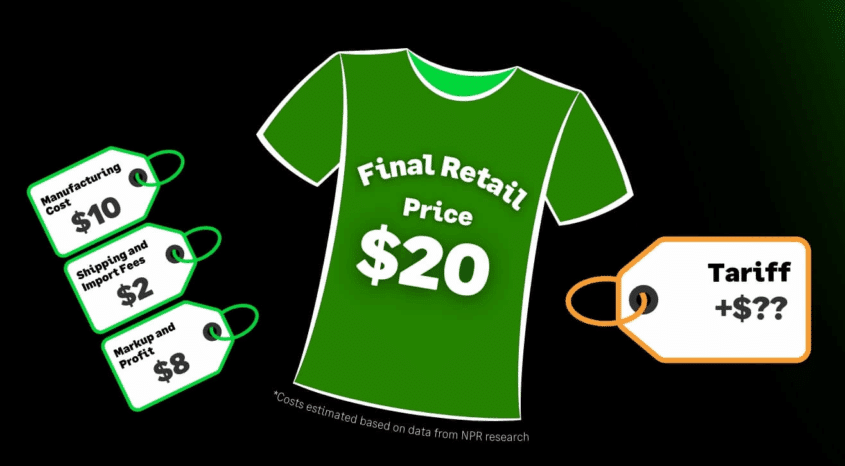Merchandise inventory refers to all the products you hold with the intention of selling to customers. From the latest fashion trends to essential raw materials, effectively managing this inventory is paramount.
Understanding your merchandise inventory directly impacts key business functions. This includes how accurately your financial statements reflect your assets, how efficiently you can fulfill customer demand, and ultimately, your profitability. Mismanaging it can lead to inaccurate financial reporting, stockouts, and lost sales opportunities.
In this guide, we’ll break down the key aspects of merchandise inventory: what it is, its various forms, how it’s accounted for, and its crucial role in your overall business strategy. Let’s dive in and unlock the secrets to merchandise inventory mastery!
What is Merchandise Inventory?
Merchandise inventory is the value of goods that a business owns and plans to sell to customers for profit. For many retailers, wholesalers, and distributors, this inventory is a significant asset. It includes all goods that a company has purchased but not yet sold.
These items can be in various stages and locations, such as in transit from suppliers, in storage facilities or warehouses, or on display in retail stores.
In accounting, unsold inventory is considered a current asset on a company’s balance sheet because it is typically expected to be sold within one year.
What Does Merchandise Inventory Include?
The value of merchandise inventory includes not only the purchase price of the goods but also the associated costs necessary to make them ready for sale. This can include:
- The price paid to suppliers
- Shipping and transportation costs
- Packaging costs
- Insurance expenses
Merchandise Inventory Examples
While merchandise inventory can encompass a wide variety of goods, the defining factor is the business’s intent to resell those goods for profit. This intent is what sets merchandise inventory apart from other assets a business might own.
To illustrate this, consider a retailer. The retailer buys clothing with the intent to sell it to customers, so those clothes are classified as merchandise inventory. However, the retailer also buys shelving units to display that clothing in the store. These shelving units are not merchandise inventory because the intent is to use them within the business, not to resell them. Instead, they are considered store fixtures and are classified as fixed assets.
Similarly, a wholesaler selling lumber to construction companies considers that lumber merchandise inventory. Even though the construction companies will use the lumber as raw material for building, the wholesaler’s intent is to resell it in its current form.
Why Is Merchandise Inventory Important?
Merchandise inventory plays a vital role in the success of any business that sells goods. Its importance spans across accounting practices and day-to-day business operations.
For Accounting
Businesses’ merchandise inventory is fundamental for accurate financial reporting.
- Balance Sheet: It’s classified as a current asset on the balance sheet, reflecting the value of goods the company expects to sell within a year. This figure is crucial for assessing a company’s financial health and liquidity. In fact, merchandise inventory accounts for a large percentage of current assets for many retailers.
- Income Statement: When merchandise inventory is sold, its cost is transferred to the cost of goods sold (COGS) on the income statement. Accurate inventory valuation directly impacts the calculation of gross profit (revenue minus COGS) and, ultimately, net income. Errors in inventory valuation can distort profitability figures and lead to incorrect financial analysis.
For Business Operations
Effective merchandise inventory management is essential for profitability, cash flow, and customer satisfaction.
- Profitability: Maintaining the right level of inventory is key. Too much inventory ties up capital and incurs storage costs, reducing profitability. Too little inventory leads to lost sales and dissatisfied customers, also impacting profitability.
- Cash Flow: Inventory represents an investment. Managing it effectively optimizes cash flow. Efficient inventory turnover (how quickly inventory is sold) ensures that capital is not tied up for excessive periods.
- Customer Satisfaction: Having the right products in stock and available for customers is crucial for a positive customer experience. Stockouts lead to frustration and can drive customers to competitors, while a wide selection can enhance satisfaction.
Merchandise Inventory Methods
Businesses use different systems to track merchandise inventory. The two primary methods are the perpetual inventory system and the periodic inventory system.
Perpetual Inventory Method
The perpetual inventory system is designed to provide a continuous, real-time update of inventory levels. Every time a sale occurs or new inventory is received, the system automatically updates the inventory records. This allows businesses to have a highly accurate and current view of their stock on hand at any given moment.
- How it works: Typically, perpetual inventory systems rely on technology like barcode scanners and point-of-sale (POS) systems to track each transaction. This automation ensures that inventory counts are consistently updated, minimizing the need for manual counting.
Periodic Inventory Method
In contrast, the periodic inventory system updates inventory records only at specific intervals, such as weekly, monthly, or quarterly. This system does not continuously track inventory changes.
- How it works: To determine the inventory on hand, a business using a periodic system must conduct a physical inventory count at the end of each period. This count is then used to update the inventory records and calculate the cost of goods sold.
How to Calculate Merchandise Inventory
Merchandise inventory calculations are essential for accurate financial reporting and effective inventory management. While the specific methods can vary (like FIFO, LIFO, or Weighted Average), the basic process involves these steps:
1. Gather Data
The first step in performing merchandise inventory calculations is to gather all relevant data. This data includes the cost of goods sold (COGS) and the total amount spent on purchased inventory. You can typically find this information on a company’s income statement or balance sheet.
It’s also essential to compile a comprehensive list of all inventory items, including a description of each item, the quantity of each item on hand, and the cost per unit for each item. This information is typically obtained from purchase records, invoices, and inventory records.
2. Determine Beginning Merchandise Inventory
Beginning merchandise inventory refers to the inventory value on hand at the start of an accounting period. This is usually the same as the ending merchandise inventory value from the previous period. If you are a new business, your beginning inventory for the first period would be zero.
3. Perform the Calculation
The calculation of ending inventory depends on the inventory costing method used. However, the basic principle involves adjusting the beginning inventory for purchases, sales, and any other changes during the period.
- Merchandise Inventory = (Beginning Merchandise Inventory + Purchases) – Cost of Goods Sold
- Purchases: The cost of new inventory acquired during the period.
- Cost of Goods Sold (COGS): The cost of inventory sold during the period.
Merchandise Inventory Example
Let’s say a bookstore starts the month with $5,000 worth of books (beginning inventory). They purchase an additional $2,000 worth of books during the month. At the end of the month, after reviewing sales records, they determine that the cost of books sold (COGS) is $3,000.
- Merchandise Inventory = $5,000 (Beginning Inventory) + $2,000 (Purchases) – $3,000 (COGS)
- Merchandise Inventory = $4,000
Therefore, the bookstore has $4,000 worth of books in inventory at the end of the month.
Merchandise Inventory Turnover
Merchandise inventory turnover is a crucial metric that reveals how efficiently a business sells its inventory. Essentially, it measures the velocity at which inventory moves through a business, indicating how many times, on average, a company sells and replaces its inventory over a specific period.
A high merchandise inventory turnover generally suggests strong sales and efficient inventory management, while a low turnover could signal slow sales or excess inventory. Understanding turnover helps businesses identify trends, optimize purchasing, and improve overall profitability.
Managing Merchandise Inventory Efficiently
Efficiently managing merchandise inventory is crucial for profitability, customer satisfaction, and overall business success. Here are some best practices to help you optimize your inventory management:
1. Leverage Technology for Accurate Tracking
Embrace inventory management software or a robust point-of-sale (POS) system. These tools automate inventory tracking, providing real-time visibility into stock levels, sales trends, and order fulfillment. This significantly reduces the risk of errors associated with manual tracking and enables data-driven decision-making.
Also, barcode scanners or RFID technology can be utilized to expedite the receiving, picking, and shipping processes, further enhancing accuracy and efficiency.
2. Maintain Optimal Inventory Levels
Implement demand forecasting techniques to predict future sales and adjust inventory levels accordingly. This helps avoid both overstocking (which ties up capital and increases storage costs) and stockouts (which lead to lost sales and dissatisfied customers).
Establish safety stock levels for key items to buffer against unexpected demand surges or supply chain disruptions. Consider using inventory management software that offers automated reordering points to trigger replenishment when stock levels reach a predetermined minimum.
3. Conduct Periodic Stock Audits
Regularly perform physical stock audits to verify the accuracy of your inventory records. This helps identify discrepancies caused by theft, damage, or administrative errors. Implement a cycle counting system, where a small portion of inventory is counted regularly, rather than conducting a full physical count all at once. This spreads out the workload and allows for more frequent checks.
Investigate and reconcile any discrepancies promptly to maintain accurate inventory data and prevent further issues.
BrightPearl’s Solutions for Managing Merchandise Inventory
BrightPearl offers retail accounting and inventory solutions to simplify merchandise inventory tracking and accounting, helping businesses operate more efficiently.
- Real-time Inventory Visibility: Provides an up-to-the-minute view of inventory across all channels and locations.
- Automated Inventory Tracking: Automates processes to reduce manual effort and errors.
- Advanced Inventory Control: Optimizes stock levels with forecasting, reordering, and allocation tools.
- Accurate Inventory Accounting: Ensures precise inventory valuation and COGS calculations.
- Streamlined Order Management: Manages orders efficiently with real-time inventory updates.
- Integration with Other Systems: Integrates with e-commerce platforms, marketplaces, and accounting software for seamless operations and a unified business view.
Master Your Merchandise Inventory for Business Success
Understanding and effectively managing merchandise inventory is crucial for the success of any business that sells goods. It’s more than just an accounting necessity; it’s a fundamental driver of your business’s health.
As we’ve explored, the way you handle your merchandise inventory directly impacts your operations. Accurate tracking and valuation are essential for sound financial reporting, ensuring your balance sheet and income statement provide a true picture of your company’s performance. Furthermore, efficient management of this inventory is key to controlling costs, maximizing cash flow, and ultimately, satisfying your customers by having the right products available.
Ready to see how a powerful retail operating system can transform your business? Book a BrightPearl demo today and discover how our solutions streamline your merchandise inventory tracking and management, empowering you to take control and drive growth.




